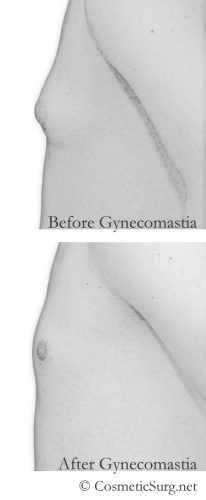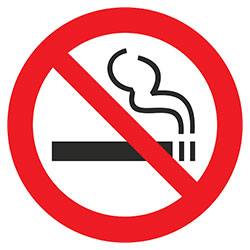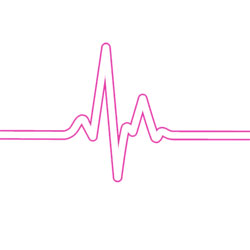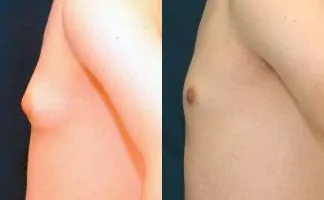What is Gynecomastia surgery?
Gynecomastia, also commonly referred to as “man boobs”, is an enlargement of breast tissue in men. Gynecomastia surgery, also referred to as “male breast reduction,” is one of the most popular cosmetic procedures requested by men. While some men requesting this surgery are overweight, many are not. The procedure can be performed under local or IV anesthesia and return to work is usually 1 week.
Many surgeons use the same breast techniques they use on women, which I feel is not the correct approach since those surgical techniques aim to give a projecting conical breast mound where the objective with male breast reduction is just the opposite – to produce a flat, non-projecting breast.
The development of gynecomastia often begins in puberty, although it can also first present as an adult. Gynecomastia can be precipitated with certain medications, and in particular, the use of steroids. The condition is often associated with increased ratios of estrogens/androgens that circulate in the bloodstream.
Gynecomastia severity is characterized with a grading system based on the amount of excess tissue and the presence of excess skin. The decision as to whether you have the procedure under local or monitored IV anesthesia depends on this grading. The scale is as follows:
- Grade 1: minor enlargement, no skin excess
- Grade 2: moderate enlargement, no skin excess
- Grade 3: moderate enlargement with skin excess
- Grade 4: marked enlargement with skin excess
What problems does Gynecomastia surgery solve?
I'm embarrassed to take my shirt off, even in front of my wife -a Pennsylvania patientCommon symptoms include:
- enlarged glandular breast tissue
- 'man boobs'
- tenderness of the breasts and/or nipples
- impaired self-confidence
Can the male breast lumps be cancer?
Breast cancer in men is rare. Only 1% of breast cancer occurs in men. Most breast masses in males are benign. Typically, a man notices a lump on one side growing over a period of a few months. It is usually not painful. There may be some bleeding through the nipple. See your doctor if you have any of these signs.How is Gynecomastia surgery performed?
 The technique used to eliminate male breasts depends on the amount of fat and breast tissue, as well as the quality of the skin and position of the nipple complex. If the skin tone is good and the nipple position is not excessively hanging, then Liposuction will yield a good result. It is possible to remove over a pound (half a kilogram) per side in some cases. We operate on male breasts of all sizes and shapes. Some men just have a small mound the size of a grape directly behind the nipple. In addition, the excess tissue may be only on one side.
The technique most commonly used is a combination of Liposuction and some amount of tissue/gland removal. For those men with larger breasts and hanging nipples, they may additionally need skin excision/mastopexy in combination with fat extraction and tissue removal.
Many surgeons use the same breast techniques they use on women. However, I feel that this is not the correct approach since those techniques aim to give a projecting conical breast mound where the objective with male breast reduction is just the opposite - to produce a flat, non-projecting breast. Therefore, a different technique is used for men.
If only a small amount of tissue is being removed, the procedure can be performed under Local anesthesia. However, if more than 300cc of tissue needs to be removed from either side, it is best to use IV Anesthesia so that you are in a light sleep during the procedure. If any amount of skin needs to be excised I usually use IV sedation to keep the patient comfortable.
The technique used to eliminate male breasts depends on the amount of fat and breast tissue, as well as the quality of the skin and position of the nipple complex. If the skin tone is good and the nipple position is not excessively hanging, then Liposuction will yield a good result. It is possible to remove over a pound (half a kilogram) per side in some cases. We operate on male breasts of all sizes and shapes. Some men just have a small mound the size of a grape directly behind the nipple. In addition, the excess tissue may be only on one side.
The technique most commonly used is a combination of Liposuction and some amount of tissue/gland removal. For those men with larger breasts and hanging nipples, they may additionally need skin excision/mastopexy in combination with fat extraction and tissue removal.
Many surgeons use the same breast techniques they use on women. However, I feel that this is not the correct approach since those techniques aim to give a projecting conical breast mound where the objective with male breast reduction is just the opposite - to produce a flat, non-projecting breast. Therefore, a different technique is used for men.
If only a small amount of tissue is being removed, the procedure can be performed under Local anesthesia. However, if more than 300cc of tissue needs to be removed from either side, it is best to use IV Anesthesia so that you are in a light sleep during the procedure. If any amount of skin needs to be excised I usually use IV sedation to keep the patient comfortable.What are the preoperative requirements?
 Patients undergoing gynecomastia surgery will have a pre-operative appointment with Dr. Rodriguez to review the surgical plan and discuss the informed consent forms. Specific pre-op requirements will depend on your surgical plan and include the following:
Patients undergoing gynecomastia surgery will have a pre-operative appointment with Dr. Rodriguez to review the surgical plan and discuss the informed consent forms. Specific pre-op requirements will depend on your surgical plan and include the following:
- Gynecomastia procedures performed under local anesthesia do not require pre-operative clearance. You may also eat a light breakfast before your surgery.
- Patients with procedures under IV sedation (or General anesthesia) are required to get a medical clearance 30 days prior to surgery. This includes a History and Physical (H&P), as well as a CBC blood test.
- Your BMI (Body Mass Index) must be less than 35 kg/m2. This is calculated based on your height and weight, and is important to reduce the risk of post op complications.
- Quit smoking at least 2 weeks prior to surgery.
- Stop taking multivitamins, herbals, and aspirin two weeks prior to surgery.
- Schedule a pre-op appointment with your surgeon to review the surgical plan and discuss risks associated with the procedure. The Informed Consent document should also be discussed at this appointment.
- Get your post operative medications filled out before surgery.
- If your procedure is under IV anesthesia you should not drink or eat anything (NPO) after midnight prior to surgery.
What is Gynecomastia Post-Op recovery like?
There is usually not much bruising with this procedure but you will have swelling and soreness. The following are post op instructions:- Bed Rest for the first 2 - 3 days post op, and drink plenty of fluids
- Notify your surgeon immediately if you have a temperature greater than 101 degree F during the first week post op
- You will feel mild discomfort in the chest area for the first 2 - 3 weeks
- Post op appointment in the office at day 5 - 6
- Wear the medical grade compression garment for the first 5-6 days continuously
- No shower for 5 days
- Return to work at day 6 - 7
- Most regular activities can be resumed after 2 weeks
- Continue wearing the compression garment regularly for up to 4 weeks
- Strenuous upper chest workouts should not be resumed until after 4 weeks
- Office f/u visits at 1 month, 4 months, and 1 year (if possible)
What are the risks and possible complications?
 Depending on techniques employed (Liposuction and/or excision) there will are risks and complications associated, as with any surgery. Possible complications with gynecomastia surgery include, but are not limited to:
Depending on techniques employed (Liposuction and/or excision) there will are risks and complications associated, as with any surgery. Possible complications with gynecomastia surgery include, but are not limited to:
- hematoma
- seroma
- fat necrosis
- infection
- nipple or breast sensitivity changes
- asymmetry
- unfavorable scarring
- regrowth of breast tissue
How much does Gynecomastia surgery cost?
| Gynecomastia surgery | 2024 Surgical Costs (exp 5/1/24) |
|---|---|
| with Local anesthesia (lipo only) | $4,000 |
| with IV sedation (lipo + gland excision) | $7000-$9300 |
 Can I finance my Gynecomastia surgery?
Can I finance my Gynecomastia surgery?
Yes, we work with a number of finance companies so that you can have a low, affordable, monthly payment. Please call the office at 410-494-8100 or see our financing section for more information.

Board Certified Plastic Surgery, ASPS Member
NOTICE
Patients depicted in our before and after galleries have provided their written consent to display their photos online. Every patient is unique, and surgical results may vary. Please contact us if you have any questions.
Articles (0)


 Can I finance my Gynecomastia surgery?
Can I finance my Gynecomastia surgery?